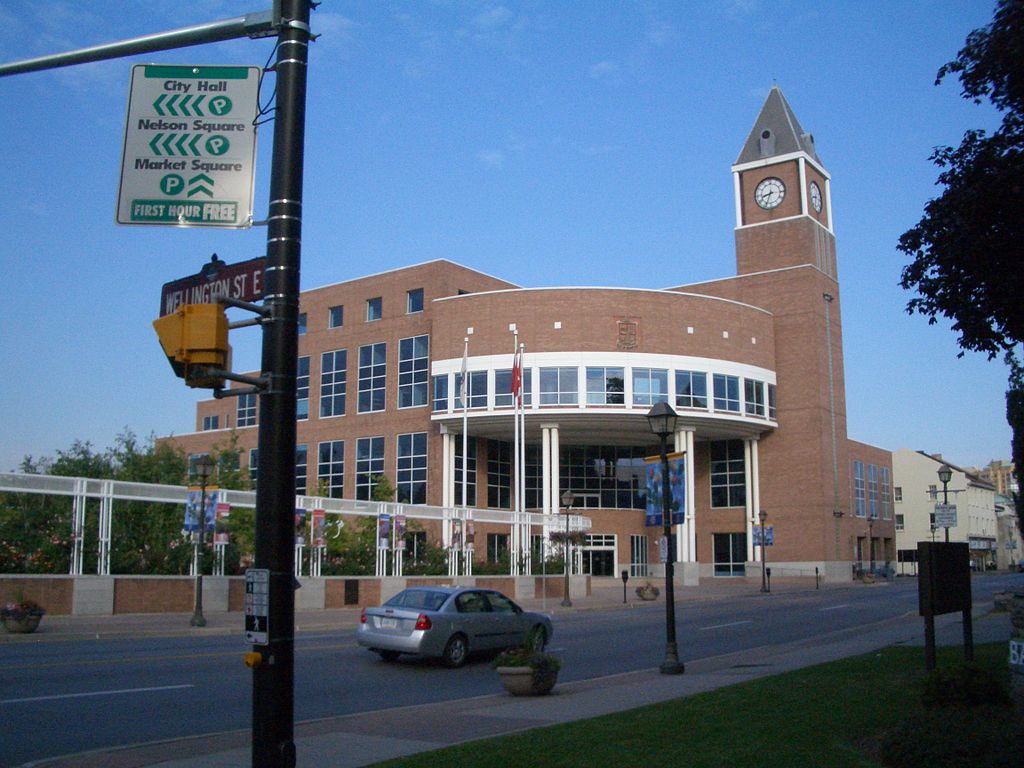Immigration policy isn’t just the laws made by the federal government. It is also the actions of lower levels of government with no jurisdiction over immigration in seemingly unrelated policy areas that can shape the lives of immigrants. The city of Brampton makes for a great case study in how municipal policy and federal law mix to create immigration policy at the street level.
Brampton, Ont., the ninth most populous city in Canada, is an immigrant city in every way. Just over a half of the Brampton population were born outside of Canada and three quarters are non-white. Immigration is also what is driving Brampton’s population explosion.
From around 100,000 people in 1976, Brampton grew nearly six times to over 590,000 in 2016. Between the 2011 and 2016 censuses, the city’s population increased by 13 per cent, three times the provincial average. And according to the Brampton council’s projections, the city will hit 761,000 people in 2021 and 889,000 by 2041.
For other cities such growth is a cause for optimism and a catalyst for improvements to housing, public transit and health care. But this has not been the case in Brampton. Housing remains low-density and inadequate to accommodate newcomers, transportation is at risk of being overwhelmed, and the city’s health-care facilities had been overwhelmed long before COVID-19. As a result, immigrants in Brampton are at risk of homelessness, isolation, and being denied health care.
Zoning Brampton’s future
There is considerable discussion on Brampton’s future. The city is engaging in a Comprehensive Zoning By-Law Review. Spurred on by the provincial A Place to Grow Act as well Brampton’s own 2040 Vision, the review is looking at what policy amendments will be needed to bring about the necessary changes. It is looking at nine policy areas, but as progress is slow and population growth continues, there is a risk of the city falling behind the curve.
The notorious developer lobby is also a major barrier to progress. Real estate developer dynasties like the Cortelluccis and the Ciprianos have long been seen as exerting influence over the levers of power. Peter Cipriano was implicated in donating to the 2018 election campaigns of six out of 10 members of council—well above the limit set in the Municipal Elections Act of 1996. In the neighbouring town of Caledon, in the early 2000s, former mayor Marolyn Morrison attempted to curb developers’ clout. When she opposed a development project, her husband was attacked and bloodied in the driveway of their home. Morrison said the attack was related to her efforts.
Despite the above bleak picture, there are plenty of reasons for optimism. Brampton does have elements in place that could make it one of the great cities of Canada. The city’s population is as diverse as it gets. Nearly three quarters of all residents are visible minorities, with South Asians (Indians, Pakistanis, Bengalis and Sri Lankans) topping the list.
This is very much a strength alluded to by Toronto-based urban planner Joe Berridge. In his book, Perfect City, Berridge profiles eight cities, including Toronto. He praises Canada’s largest city’s diversity, and he praises government policies that have allowed Toronto’s immigrants to be a valued part of its fabric.
Benefits of skilled immigration…
Thanks in part to Canada’s points system, which favours skilled workers above all other classes of immigrants (albeit Canada does have one of the more generous family class policies), immigrants are selected based on criteria that ensure good economic participation. The results of this policy are becoming more and more apparent.
Last spring, the federal government released a report praising its Express Entry program, a points-based policy that selects immigrants based on skill and language proficiency. The report found high levels of labour market participation among those invited under the program. Since its launch in 2015, 95 per cent of the program’s cohort have become established economically and 83 per cent have reported doing so in their primary occupation.
This success has not gone unrecognized internationally. Time Magazine reported in 2019 that tech companies preferred hiring high-skilled workers in Canada over the U.S. The Organisation for Economic Co-operation and Development (OECD), in its report Recruiting for Success: Challenges for Canada’s Labour Migration System, said that “the overall integration outcomes of the immigrant population in Canada tend to be well above those seen in most other OECD countries, and public acceptance of migration is high.”
It stands to reason that the benefits of Canada’s points-based immigration system, which came into force in 1967, have trickled down to Brampton. Skilled workers selected through the system concentrate in the city, meaning the building blocks are there to turn Brampton into one of the greats in Canada—just as long as the city doesn’t squander the available brain gain.
…reaped by others?
A 2017 study by the United Way of Toronto and York Region paints a dire picture of income inequality in Toronto and the surrounding regions. Brampton is a particularly frightening image. In 1980, Brampton, then with a population of 142,950, had few small low-income pockets, but the vast majority of residents were middle-income earners.
In 2000, as the population exploded to nearly 327,000 people, those pockets appear to have increased. By 2015, low-income neighbourhoods comprised the majority of the city. United Way CEO Daniele Zanotti told the CBC at the time, “Social infrastructure is not keeping pace with need, and so you’ve got a demand of supports close to home and not an abundance of supply.”
The situation is not good for the employed either. A lack of developmental diversity and corporate offices has meant that immigrants have to go elsewhere to work and play. Some 60 per cent of the population works outside the city. This has earned Brampton the nickname of a “bedroom community,” alluding to people only coming home to sleep. While Brampton has a big number of young skilled workers, other cities appear to reap the benefits of its labour pool.
Applying Jane Jacobs’ vision to Brampton
The venerated urban activist Jane Jacobs spoke about what it takes to make cities great in her seminal 1961 book, The Death and Life of Great American Cities. In the 1950s and 1960s, she fought against the destruction of New York’s Greenwich Village for an expressway. After moving to Toronto in 1968, she vehemently opposed the Spadina Expressway, which would have destroyed the city’s Jewish quarter. Her people-centric ethos is behind her book, which can serve as a guide on how to enable Brampton’s immigrants to reach their full potential.
“Big cities are natural generators of diversity and prolific incubators of new enterprises and ideas of all kinds,” writes Jacobs. It should be noted that when she says “diversity,” she is not referring to diversity of people. She is talking about the diversity of infrastructure, city amenities and services.
One of Jacobs’ core beliefs is the offering of a variety of ways for people from all occupations to make a life in a city. She sees low-density living, like that found in Brampton, as inherently detrimental to people and businesses.
To her, small businesses must “be in a lively city setting where their employees find a range of subsidiary conveniences and choices that they want and need.” She adds that suburban environments are not useful to big businesses because the cost benefits of “suburban land and space are typically canceled by the greater amount of space per worker required for facilities that in cities no single employer need provide.” She saw this pattern in city-life amenities as well as cultural facilities and entertainment.
In this four-part series, NCM will examine in detail three municipal policy areas that are holding its community back: housing, transportation, and health care.
Mansoor Tanweer is New Canadian Media’s Local Journalism Initiative reporter on immigration policy. An immigrant himself, he has covered municipal affairs and the Brampton City Council in addition to issues relating to newcomers over several years.






Dear Monseer,
Thank-you for doing such an excellent series on Brampton. Will you be doing anything on violence against women and children living in Brampton as a part of this series?
Is it true that the stats on VAW are much higher in Brampton? I understand that intimate partner femicides are also much higher than in other parts of the country, is this true? I work in the subject area but I do no know the stats in your city.
My gratitude for your work,
Warmly
Deborah